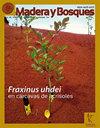两处墨西哥高海拔森林的每日温度和湿度特写
IF 0.6
4区 农林科学
Q4 FORESTRY
引用次数: 0
摘要
由于气象站的缺乏和对高山森林气候信息的强烈需求,需要使用大规模的气候算法,但缺乏现场信息导致其适用性存在很大的不确定性。在这项研究中,我们使用线性混合模型研究地形(海拔和坡向)和时间变化(从每小时到每月)对温度(T)和相对湿度(RH)的5年仪器数据库。此外,我们比较了地理算法的气候信息和我们的原位数据。我们的数据覆盖了两座山(Tláloc-TLA和Jocotitlán-JOC, msamuxico州),四个高程带(海拔3500米至3900米)和两个方面(西北和西南)。山区平均温度(TLA = 7.56°C±0.03°C, JOC = 6.98°C±0.02°C)和相对湿度(TLA = 69.3%±0.12%,JOC = 72.5%±0.13%)存在差异。解释T最显著的变量是海拔(Δ= -0.36°C × 100 m)和坡向,而坡向与RH相关。5月是最暖的月份(平均气温9.50°C±0.10°C), 9月是最湿的月份(相对湿度分别为85.1%±0.30%和87.4%±0.25%)。尽管气候源之间的相关性较高(r = 0.83),但地理算法高估了T而低估了RH。我们建议,当地理算法的气候信息在高山森林中使用时,需要尽可能地使用原位信息进行校准。本文章由计算机程序翻译,如有差异,请以英文原文为准。
A close up of daily temperature and moisture in two Mexican high-elevation forests
The scarcity of meteorological stations and the strong need for climatic information in alpine forests require the use of large-scale climatic algorithms but the lack of in situ information produces high uncertainty on their suitability. In this study, we used linear mixed models to study the topographic effect (elevation and aspect) and time variations (from hourly to monthly) on temperature (T) and relative humidity (RH) with a 5-year instrumental database. Furthermore, we compared climatic information from a geographical algorithm and our in-situ data. Our data covered two mountains (Tláloc-TLA and Jocotitlán-JOC, State of México), four elevation belts (from 3500 m to 3900 m a.s.l.), and two aspects (Northwest and Southwest). We found differences for average temperature (TLA = 7.56 °C ± 0.03 °C and JOC = 6.98 °C ± 0.02 °C), and relative humidity between mountains (TLA = 69.3% ± 0.12% and JOC = 72.5% ± 0.13%,). The most significant variables explaining T were the elevation (Δ= -0.36 °C by 100 m) and aspect, while the aspect was relevant for RH. May was the warmest month (9.50 °C ± 0.10 °C for average temperature) while September the wettest for both mountains (85.1% ± 0.30% and 87.4% ± 0.25 % RH, respectively). Despite the higher correlations between climatic sources (up to r = 0.83), the geographical algorithm overestimates T and underestimates RH. We propose that when climatic information from geographical algorithms is used in alpine forests, calibrations are needed whenever possible with in situ information.
求助全文
通过发布文献求助,成功后即可免费获取论文全文。
去求助
来源期刊

Madera Y Bosques
FORESTRY-
CiteScore
0.90
自引率
0.00%
发文量
16
审稿时长
>12 weeks
期刊介绍:
Madera y Bosques (Wood and Forests) is a scientific periodical journal which has the objective of serving as media for scientific and technological research related to forest products, forest management and conservation as well as forest ecology topics and related subjects. It publishes original scientific papers, topical articles, scientific notes or bibliographic reviews. It is a quarterly publication that appears in Spring, Summer and Fall. Ocassionally, special Winter Issues are published. Manuscripts are accepted in Spanish, English and sporadically in other languages. It has no Page Processing Charges and it is published by the Environment and Sustainability Department of the Instituto de Ecología, A.C. (Xalapa, Ver., México).
 求助内容:
求助内容: 应助结果提醒方式:
应助结果提醒方式:


